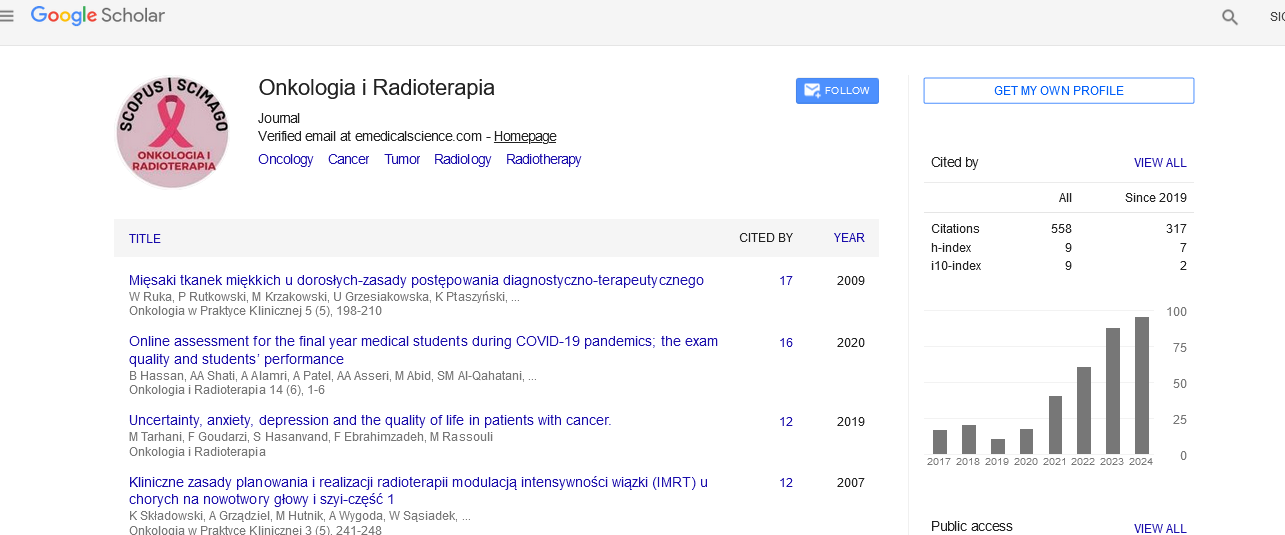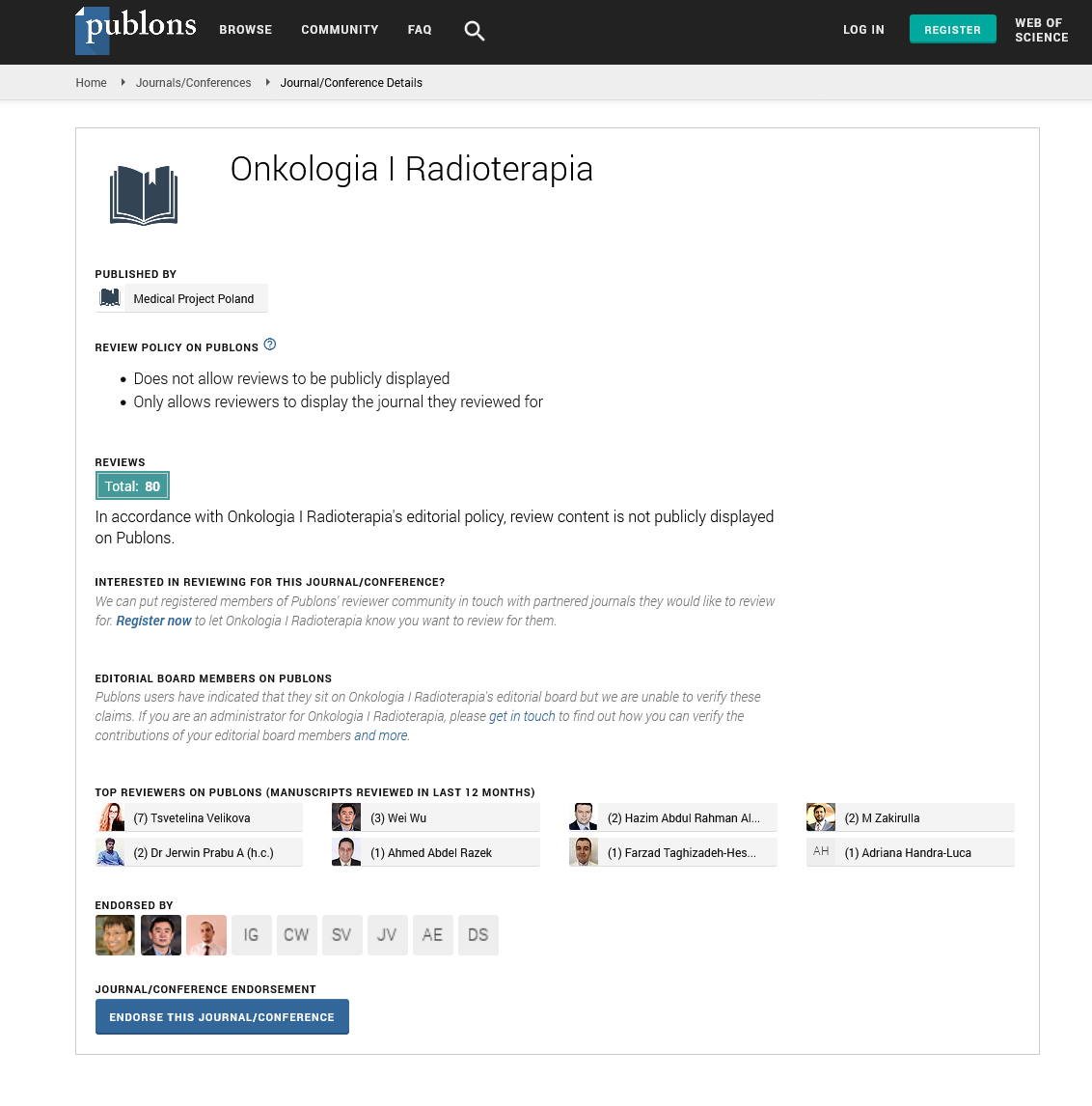Commentary - Onkologia i Radioterapia ( 2025) Volume 19, Issue 2
Global disparities of challenges and solutions in cancer care
Akshaya Reddy*Akshaya Reddy, Department of Pharmaceutical Analysis, Chitkara University, Punjab, India, Email: akshaya634@gmail.com
Received: 14-Nov-2023, Manuscript No. OAR-23-120071; , Pre QC No. OAR-23-120071 (PQ); Editor assigned: 16-Nov-2023, Pre QC No. OAR-23-120071 (PQ); Reviewed: 30-Nov-2023, QC No. OAR-23-120071; Revised: 22-Jan-2025, Manuscript No. OAR-23-120071 (R); Published: 29-Jan-2025
Abstract
Description
Cancer, a relentless adversary that knows no borders, affects millions worldwide. However, the battle against this formidable foe is marked by stark global disparities in access to cancer care. While advances in medical science offer hope for improved outcomes, these breakthroughs are not universally accessible. This commentary delves into the multifaceted challenges and complexities that underlie global disparities in cancer care, exploring the impact on individuals, communities, and the urgent need for concerted efforts to bridge the divide.
The landscape of global disparities
Disparities manifest in multiple dimensions, encompassing prevention, early detection, diagnosis, treatment, and survivorship. Factors such as socioeconomic status, healthcare infrastructure, education, and cultural norms contribute to the divergence in cancer outcomes.
Prevention and early detection
Regular screenings, lifestyle education, and vaccination programs are commonplace. Conversely, in low and middle-income countries, where resources are scarce, preventive measures are often underprioritized. This lack of emphasis on early detection results in later-stage diagnoses, reducing treatment options and diminishing the chances of successful outcomes.
Diagnosis and access to treatment
The diagnostic journey is riddled with disparities, beginning with the availability of screening tools and diagnostic facilities. High-income countries often boast state-of-the-art diagnostic technologies, leading to early and accurate cancer diagnoses. Contrastingly, resource-limited settings grapple with insufficient diagnostic infrastructure, delayed diagnoses, and a higher burden of late-stage presentations.
Once diagnosed, access to treatment becomes a critical determinant of outcomes. Disparities extend beyond the availability of cutting- edge therapies; they also encompass the accessibility of basic treatments, such as surgery, radiation, and essential medications. Economic constraints, inadequate healthcare infrastructure, and limited trained personnel amplify the challenges faced by individuals in low-resource settings.
The role of socioeconomic factors
Socioeconomic disparities significantly impact cancer care outcomes. Affluent communities often benefit from comprehensive healthcare coverage, enabling them to access a spectrum of cancer services. In contrast, economically disadvantaged populations confront barriers that hinder timely diagnoses and treatments. Financial constraints may force individuals to forgo screenings, delay seeking medical attention, or discontinue treatment prematurely.
The intersection of poverty and cancer exacerbates the challenges faced by vulnerable populations, perpetuating a cycle of limited access to care and poorer outcomes.
Cultural and educational influences
Cultural beliefs and educational disparities also contribute to global variations in cancer care. Misconceptions about cancer, its causes, and treatment options can lead to delayed or inappropriate care- seeking behaviours. Cultural norms surrounding illness disclosure and treatment decision-making further influence the trajectory of cancer care in diverse societies.
health literacy, prevalent in many low-resource settings, impedes individuals' ability to understand cancer prevention measures, recognize symptoms, and engage in informed decision-making regarding their healthcare. Bridging this educational gap is crucial for fostering proactive health behaviours and empowering individuals to navigate the complexities of cancer care.
Women's health disparities
Gender-specific disparities in cancer care, particularly in women's health, highlight additional layers of inequality. Comprehensive women's health programs are vital for addressing these disparities and ensuring equitable access to preventive measures and treatments.
The impact of the COVID-19 pandemic
The ongoing COVID-19 pandemic has further exacerbated global disparities in cancer care. The diversion of healthcare resources to manage the pandemic has disproportionately affected individuals in resource-limited settings, intensifying existing challenges and potentially leading to a surge in late-stage cancer diagnoses.
Investment in healthcare infrastructure
Prioritize investments in healthcare infrastructure, particularly in low and middle-income countries, to enhance diagnostic capabilities, treatment facilities, and the overall capacity of healthcare systems.
Education and awareness programs
Implement comprehensive education and awareness programs targeting diverse communities. Promote health literacy, dispel myths about cancer, and emphasize the importance of early detection and preventive measures.
Affordable and accessible treatment options
Advocate for the development and dissemination of affordable cancer treatments, medications, and technologies. Collaborate with pharmaceutical companies to ensure fair pricing and explore innovative financing models to make cancer care more accessible.
Support for cancer research
Invest in cancer research that addresses the unique challenges faced by diverse populations. Develop context-specific interventions, considering cultural, socioeconomic, and educational factors.
Global collaboration and knowledge sharing
Foster international collaborations to facilitate the exchange of knowledge, expertise, and resources. Establish platforms for cross- cultural learning and collaboration, ensuring that best practices are shared and implemented globally.
Empowerment through technology
Leverage technology to bridge gaps in cancer care. Telemedicine, mobile health applications, and other digital solutions can facilitate remote consultations, patient education, and follow-up care, particularly in underserved areas.



